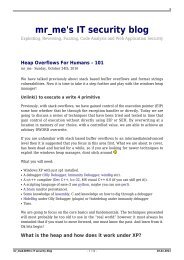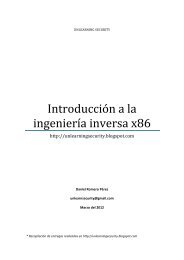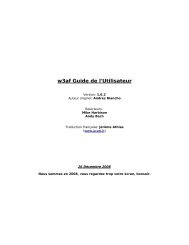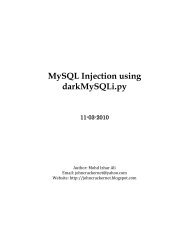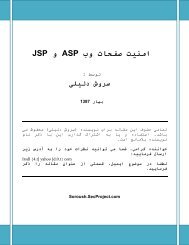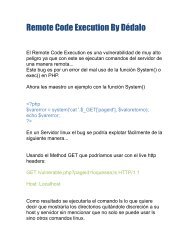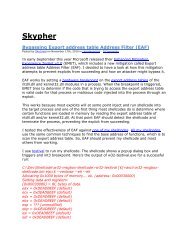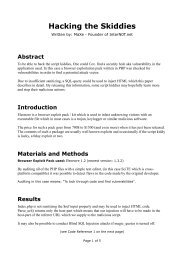Forensic analysis of iPhone backups - Exploit Database
Forensic analysis of iPhone backups - Exploit Database
Forensic analysis of iPhone backups - Exploit Database
Create successful ePaper yourself
Turn your PDF publications into a flip-book with our unique Google optimized e-Paper software.
(Figure 8)<br />
Data protection mechanism introduced in iOS 4 protects the sensitive data in files on the file system<br />
and items in the keychain by adding another layer <strong>of</strong> encryption. Data protection uses the user’s<br />
passcode key and the device specific hardware encryption keys to generate a set <strong>of</strong> class keys which<br />
protect the designated data. Developers use the data protection API to add protection class flag to the<br />
files and the keychain items. On the <strong>iPhone</strong>, protection class keys are stored in the System Keybag.<br />
During the backup, iTunes generates a new set <strong>of</strong> protection class keys and stores them in the<br />
Backup Keybag. Class keys stored in the System Keybag are different from the keys in the Backup<br />
Keybag. Protected files and data in the backup are encrypted using the class keys that are stored in<br />
the Backup Keybag. In normal <strong>backups</strong> Backup Keybag is protected with a key generated from the<br />
<strong>iPhone</strong> hardware (Key 0x835) and in encrypted <strong>backups</strong> it is protected with the iTunes password.<br />
Data protection for files can be enabled by setting a value for the NSFileProtection attribute using the<br />
NSFileManager class setAttributes:<strong>of</strong>ItemAtPath:error method. List <strong>of</strong> protection classes available for<br />
the files are shown in Table 5.



